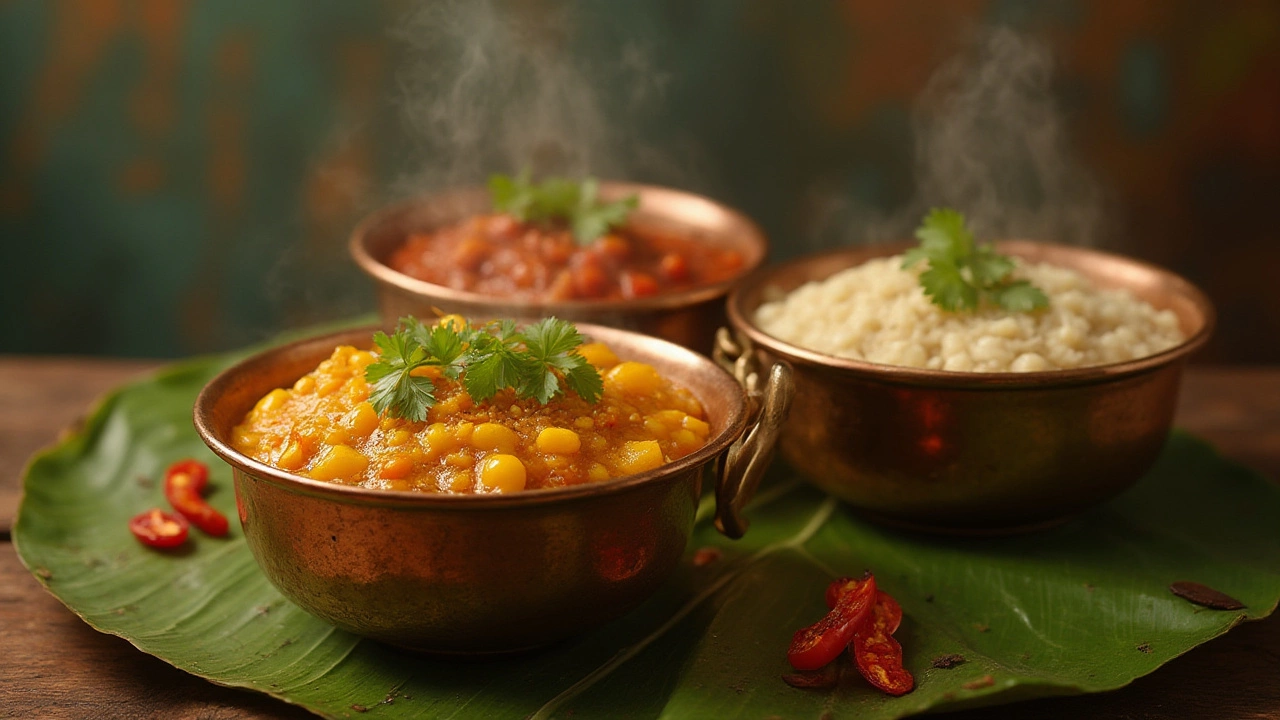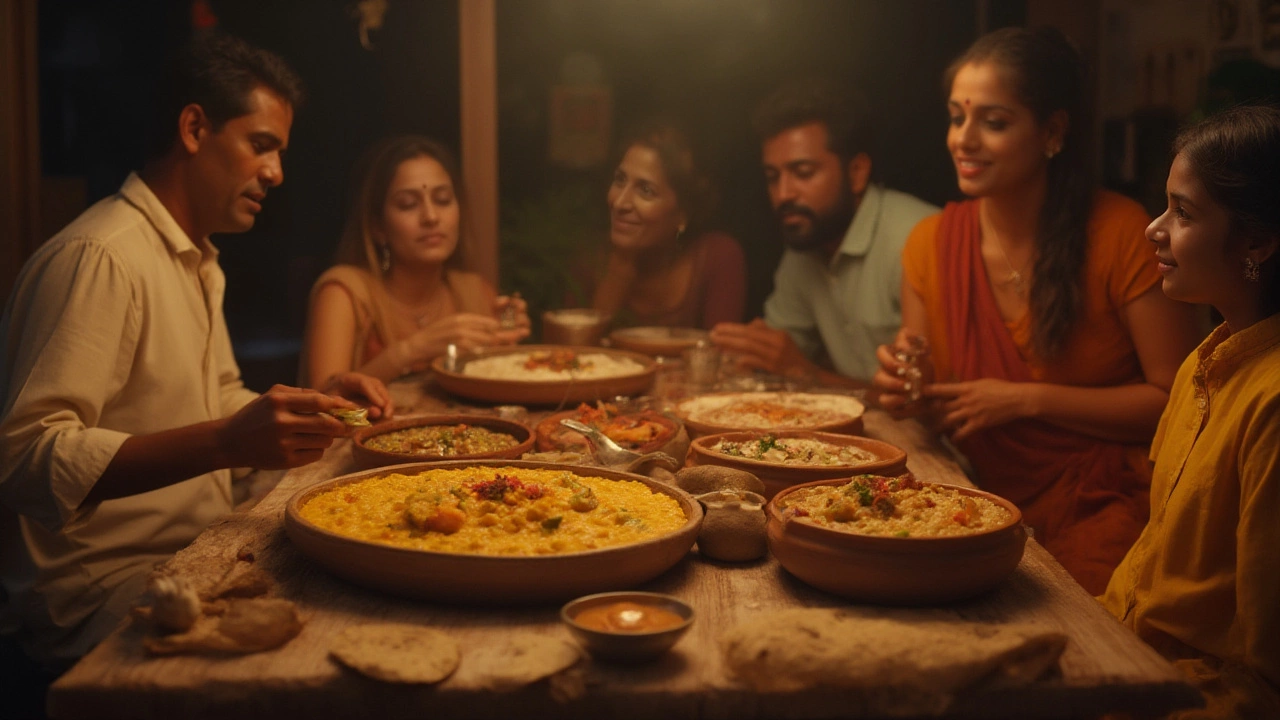You’ve probably debated this in your head after a long day: which dal is best for your dinner plate? Some folks say, eat whichever one you like—dal is dal, it’s all protein! Not so fast. The dal you pick for your night meal can actually make or break your sleep, your stomach, and how you feel the next morning.
Here’s a surprising fact: over 60% of adults in India eat dal for dinner at least four times a week (according to a 2023 survey by the Indian Dietetic Association). But not all dals are created equal when the moon’s up. The trick is to choose a dal that’s gentle on digestion but doesn’t skimp on the nutrients. Welcome to the tasty science of nighttime dal!
What Makes Some Dals Better for Night-Time?
After sunset, your metabolism slows down. Heavy or hard-to-digest food can literally keep you up at night. That’s why picking the right dal becomes important. Dals vary in their protein, fiber, and phytic acid levels. Some are lighter, less likely to cause bloating, and quicker to digest.
The key players? Split yellow moong dal, red lentils (masoor dal), and split green gram often top expert lists. These are low in complex fibers and easy on your tummy compared to whole urad dal or chana dal, which, while tasty, can sometimes sit heavy in your system and may lead to uncomfortable gas or flatulence.
Ever heard someone complain about feeling gassy after eating dal makhani at night? That’s your cue: urad dal is notorious for being hard to break down, especially close to bedtime. Moong dal, on the other hand, digests so well that it’s even fed to babies and elderly folks with weak digestion.
Here’s a quick rundown on the digestion time for common dals. This data is pulled from the Indian Council of Medical Research (ICMR):
| Dal Type | Approximate Digestion Time (hours) |
|---|---|
| Moong Dal (split yellow) | 2-3 |
| Masoor Dal (red lentil) | 3-4 |
| Toor Dal | 4-5 |
| Chana Dal | 5-6 |
| Urad Dal | 6+ |
Notice that moong dal wins the race. That’s why it’s my go-to after a late night at work or after a heavy lunch—nothing settles my system like a bowl of light moong dal soup sprinkled with a bit of cumin.
What about protein, though? Good news: even the gentlest dals have enough protein to keep your muscles happy without making your digestive system work overtime. You don’t have to sacrifice nutrition for comfort.
The Health Benefits of Eating Dal at Night
Can eating dal at night help with weight loss? Or does it pile on the calories when your body is ready to rest? People often worry about eating carbs after sunset, but dal deals in complex carbs and plant-based protein, not blood-sugar-spiking simple carbs like white bread or sugar.
For starters, eating dal at night keeps you full without weighing you down. Fiber in dals helps you feel satisfied and cuts night-time cravings for junk food. A study in the Journal of Nutrition & Metabolism in 2022 found that those who ate legumes like dal for dinner consumed, on average, 18% fewer calories overall in the evening. That’s because their stomachs registered ‘full’ sooner and stayed that way longer.
Dal also keeps your blood sugar steady, which is big news for diabetics or anyone wanting to avoid those late night sugar spikes that mess with your sleep cycle. Unlike heavy animal proteins, plant-based proteins in dals are easier for most people to digest, especially when paired with warm rice or a small roti.
Let’s talk micronutrients because dal isn’t just about protein and fiber. Depending on the variety, you’re getting magnesium, potassium, iron, and B vitamins, which all play a role in muscle recovery and reducing nighttime cramps or restlessness. Moong dal, specifically, is a top source of folate and antioxidants. Traditional Ayurvedic practice has long recommended moong dal khichdi (cooked with rice, cumin, and mild spices) for detox and restful sleep.
One tip all nutritionists agree on: avoid spicy or oily dal preparations at night. The trick is to keep things simple. Opt for a light tadka (tempering) with ghee or minimal oil, cumin seeds, a pinch of turmeric, and maybe some ginger and garlic for anti-inflammatory benefits. Heavy cream, butter, or too much chili? Save those for lunch instead.
Want maximum benefit? Try soaking your dal for a few hours and rinsing thoroughly before cooking. This reduces phytic acid—a compound that can interfere with nutrient absorption and sometimes causes bloating. Pressure cook the dal so it’s soft and easy to digest. Your stomach (and your sleep) will thank you.

The Best Dal Varieties to Eat for Dinner
If you’re searching supermarket shelves or your local kirana, you’ll see a dizzying variety of dals. Which one is truly the best for your night meal?
Moong Dal (Yellow Split): The all-star for nighttime. It’s light on the belly, easy to digest, and rarely causes uncomfortable gas. Plus, it’s a chameleon—fits into soups, khichdi, and even pancakes (cheela) if you want something different.
Masoor Dal (Pink or Red Lentils): Slightly more earthy flavor than moong, cooks fast, and is still gentle on the gut. There’s a reason why it’s often the first dal little kids or recovering patients eat. If you like a slightly nutty, rich taste, masoor dal’s your friend.
Toor Dal (Yellow Pigeon Pea): This is your classic sambar or dal tadka dal. It’s a tad heavier than moong and masoor, but if you’re cooking it soft (not al dente!) and using mild spices, it’s still very workable for nights. Don’t eat giant portions, though.
- Skip chana dal and whole urad dal at night unless you’re used to them.
- Black gram (whole urad) is protein-rich but notorious for causing heaviness—and beans in general take longer to digest.
- Chana dal (split Bengal gram) is delicious, especially in stews, but its fiber content just makes it a ‘daytime’ dal in most nutritionists’ books unless you have an iron stomach.
Confused about portion size? A single bowl (about 150 grams cooked) is usually enough for most adults. If it’s paired with rice or a small whole wheat roti and a side of cooked veggies, that’s a solid, sleep-friendly meal right there.
Expert Tips for Making Dal More Digestible at Night
Nobody wants to burp and toss in bed all night. If dal has ever betrayed you at bedtime, try these tested tips. They’ll make even heavier dals go down smoother.
- Soak and rinse: Always soak dal for 30 minutes to 2 hours, then discard the soaking water. This washes away much of the oligosaccharides that cause gas.
- Cook until mushy: Use a pressure cooker or slow cook on the stovetop. Undercooked dal is much harder to digest.
- Mild tadka (tempering): Stick to cumin, asafoetida (hing), and ginger in ghee or oil. Hing especially controls gas and helps break down protein chains.
- Avoid mixing too many types: Some love ‘panchratan dal’ but mixing lots of dals increases the load on your gut. One or two types max at night is best.
- Skip cream and butter at dinner: Heavy fats just increase the digestion time. If you want something special, add a teaspoon of ghee right before serving—not while cooking.
- Add anti-bloating herbs: Fresh coriander, mint, or even a dash of ajwain (carom seeds) go a long way in keeping your stomach flat, not puffy.
- Don’t gulp cold water afterwards: Sipping warm water or light herbal tea is much better for post-dal digestion.
- Let your dal rest: Freshly cooked dal is best, but letting it cool slightly (not piping hot) before eating also makes it easier on your system.
A note on reheating: Try not to reheat dal multiple times, as it can become harder to digest and lose flavor. Always make small, fresh batches if you can.

Sample Dinner Ideas and Myth-Busting Q&A
Ready to put this info to good use? Whip up a light moong dal tadka: pressure cook moong dal until soft, add a tempering of cumin, ginger, garlic in ghee, sprinkle with fresh coriander. Pair with brown rice, add a ladle of sautéed spinach and carrots, and you’ve got a nutritionist-approved, easy-to-digest meal.
If you’re in the mood for something cozy, go with a moong dal soup—a sprinkle of pepper and a lemon wedge on the side is basically comfort in a bowl after a busy workday. You can swap in red masoor dal or a mix of moong and masoor for extra flavor.
Don’t feel like rice? Wrap your dal in a thin besan chilla or use it as a dip with roasted sweet potato wedges. The combinations are only limited by your appetite!
Common Q&A:
- Does dal really cause weight gain if eaten at night? Not if you keep portions in check and avoid heavy fats. Dal is protein, not sugar.
- Is khichdi a good idea at night? Absolutely. In Ayurveda, moong dal khichdi with a dash of ghee, turmeric, and ginger is considered one of the most sattvic (pure, calming) foods for balancing the body and aiding sound sleep.
- Can I eat dal every night? You can, but rotate the types and keep it mildly spiced. Small portions won’t hurt.
- How late is too late for dal? Try to finish dinner at least 2 hours before bed for smooth digestion. If you get late, keep portions extra small.
When you’re standing in front of your pressure cooker at 8:30 pm—stomach grumbling, brain tired, but you want dinner that loves you back—reach for that yellow moong dal or soft red masoor. Your gut will thank you, your tastebuds will cheer, and next morning, no regrets, just pure comfort!
